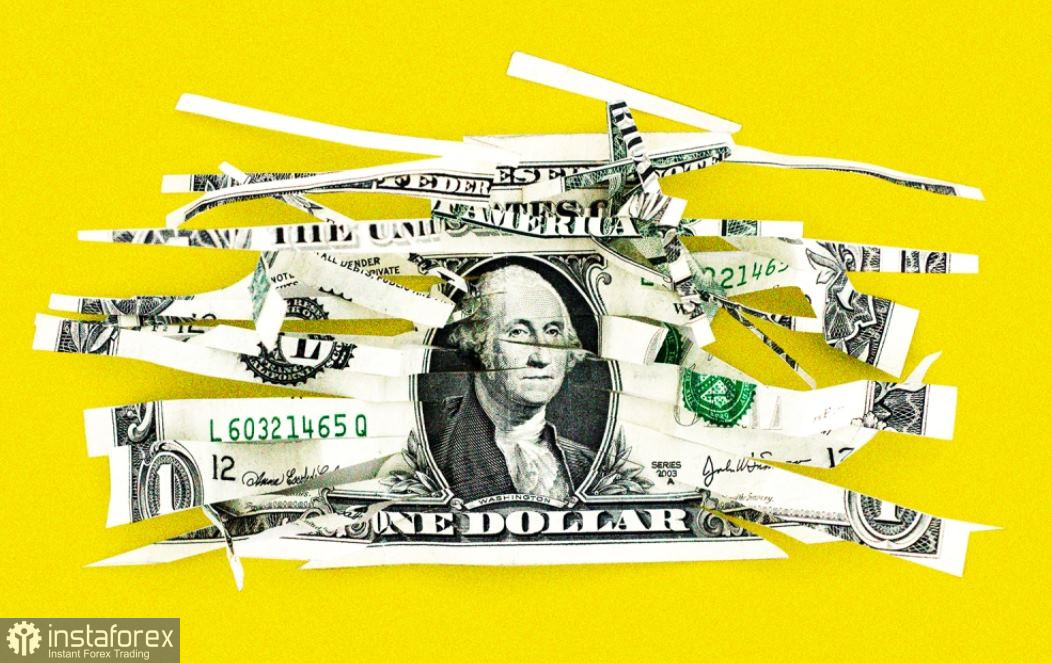Following a rapid price decline last week, the euro/dollar pair remains around the 8-figure mark. The expected northern gap did not occur, contrary to the expectations of several currency strategists. Optimistic statements from Joe Biden about resuming negotiations on the debt ceiling played their part, but overall, the situation with the pair remains uncertain.

Currently, EUR/USD buyers have only managed to organize a minor corrective pullback, so it's premature to talk about any significant turnaround. However, it's noteworthy that the current upward trend of the pair is due not only to the weakening of the greenback but also to the strengthening of the euro. Traders responded to the forecast published today by the European Commission, which supported the single currency.
Brussels' optimism is on the side of the euro
So, the European Commission presented a spring economic forecast (the previous one was published in February this year), which improved the forecast for the European Union's economy for this year but worsened inflation. Thus, according to updated data, if earlier GDP growth in 2023 were forecast at 0.8%, the European economy would grow by 1%. Next year, EU GDP is expected to grow by 1.7%, while the February forecast predicted growth of 1.6%.
The report states that the European economy "continues to show resilience." The decline in energy prices, the reduction of supply chain problems, and a strong labor market led to moderate GDP growth in the first quarter of this year, "thus dispelling fears about a recession."
Europe did not indeed slip into a recession, showing minimal growth. In the first quarter of 2023, the GDP of the Eurozone countries grew by 0.1%, which turned out to be lower than the expected growth of 0.2%. The indicator grew to 1.3% annually, with a forecasted growth of 1.4%.
Today's report states that the European Union will most likely avoid a recession this year, despite destabilizing risks.
Another important point is that the European Commission has revised its inflation forecasts upward. Thus, according to the EC economists' calculations, inflation in the eurozone this year will be 5.8%, whereas an increase to 5.6% was expected in February. Consumer prices this year are expected to increase by 6.7%. Core inflation in the eurozone this year will average 6.1%. The forecast for overall inflation for 2024 was also revised upwards – to 2.8% (from the previous value of 2.5%).
This suggests that the ECB will likely maintain a hawkish stance in the foreseeable future. Some representatives of the European Central Bank are also voicing similar signals. For instance, Peter Kazimir, a member of the Governing Council, stated yesterday that the regulator would have to raise interest rates "longer than previously thought" to quell inflationary pressure. Joachim Nagel, the head of the Bundesbank, made a similar statement, noting that the latest interest rate hike "will certainly not be the last," as the Central Bank needs to ensure the "end of the inflation wave."
The dollar is still on top
Despite positive signals for the euro, the EUR/USD pair remains under pressure – and will remain so as long as there is concern in the market about a possible default in the US. Last week, the dollar significantly strengthened its position amid reports that negotiations between Republicans and Democrats on the debt ceiling had reached a deadlock. However, on Monday, this fundamental factor weakened its influence as US President Joe Biden expressed optimism about the next round of negotiations, allowing for the possibility of an agreement to prevent default. He said he will meet with congressional leaders on Tuesday (May 16), following which the parties may find common ground. As Biden noted, the desire to reach an agreement is present "on their side as well as ours."
Indeed, for this reason, the southern impulse of the EUR/USD at the start of the new trading week has petered out. The forecast published by the European Commission today certainly played a role in this, but if the greenback had not weakened across the market, the pair would now be at least at the base of the 8-figure. This indicates the instability of the current situation: if negotiations again reach a deadlock, we will witness another dollar rally.
Conclusions
Thanks to decreased market risk-off sentiment, EUR/USD buyers could catch their breath and even organize a small correctional rollback. The European Commission provided additional support to the euro, with its economists improving the forecast for the EU economy this year and simultaneously predicting more significant inflation growth in the eurozone.
However, the situation with the pair remains uncertain. Suppose negotiations between the US President's administration and Congress on preventing a default again reach a deadlock. In that case, the dollar will more than make up for the lost positions: the EUR/USD pair will drop to the base of the 8-figure range and possibly even test the support level of 1.0780 (the lower boundary of the Kumo cloud on the daily chart). But an alternative scenario is also possible, where a compromise on raising the debt ceiling is still found. In this case, the spring may unwind in the opposite direction: the pair will return to the range of 9–10 figures.
In times of such uncertainty for the EUR/USD pair, it is advisable to maintain a wait-and-see position - both purchases and sales are risky.





















